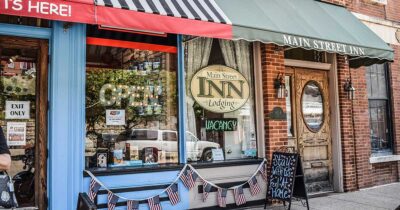We may earn money when you click on links to our partners. Advertiser Disclosure
Independent retailers are more than just unique and cozy shops; they support and grow the local economy. In fact, about 48% of each purchase made at local independent businesses is recirculated locally before it leaves the area, compared to only 14% of purchases made at chain stores.
The more consumers shop locally, the better off the local economy is. To celebrate Independent Retailer Month, the B2B Reviews research team compared business survival rates, retail business presence, consumer spending power, and other key metrics for all 50 states and the District of Columbia to determine where retail businesses are thriving in 2025.
Check out our methodology for a full breakdown of how we determined our rankings.
Key Findings
- 12.10% of small businesses in South Dakota are retail businesses, the highest percentage of all states.
- Wyoming has the highest number of retail businesses per capita, with 1,241.57 retail businesses per 100,000 people.
- Montana has the highest business survival rate at 64.2%.
- Mississippi has the lowest cost of living out of all the states.
- Connecticut has the highest per capita income of all states at $44,496.
- Massachusetts consumers spend the most on goods and services, with personal consumption expenditures of $64,214.
Best States for Independent Retailers
Sort this chart to see where your state ranks overall or by category.
Data represents points earned for each category, rounded to the nearest whole number.
Top 10 States for Independent Retailers
Take a look at the top ten states where independent retailers are thriving.
1. Minnesota
Independent retailers thrive most in Minnesota. Not only does Minnesota have a 62.5% business survival rate, the fourth highest overall, but it also has a 71.9% urban population, helping independent retailers connect with their consumer base. Additionally, Minnesota scored above the national average in nearly every category, showing that it is the best state for independent retailers to thrive.
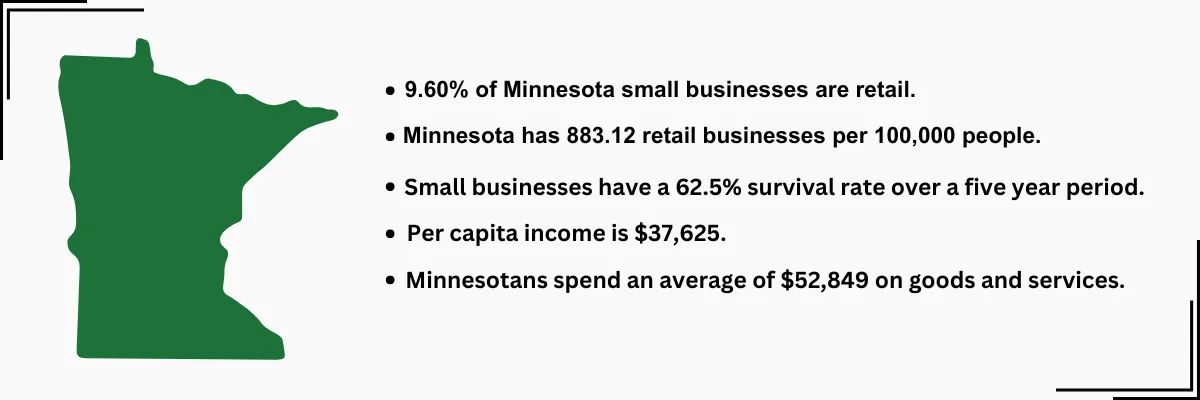
2. Montana
Though Montana comes in second, it ranks first for business survival rates at 64.2%. Montana also comes in third for the number of retail establishments per capita. It has 1,153.54 retail businesses per 100,000 people, demonstrating a healthy independent retail landscape. Additionally, Montana has a 4.5% population growth rate.
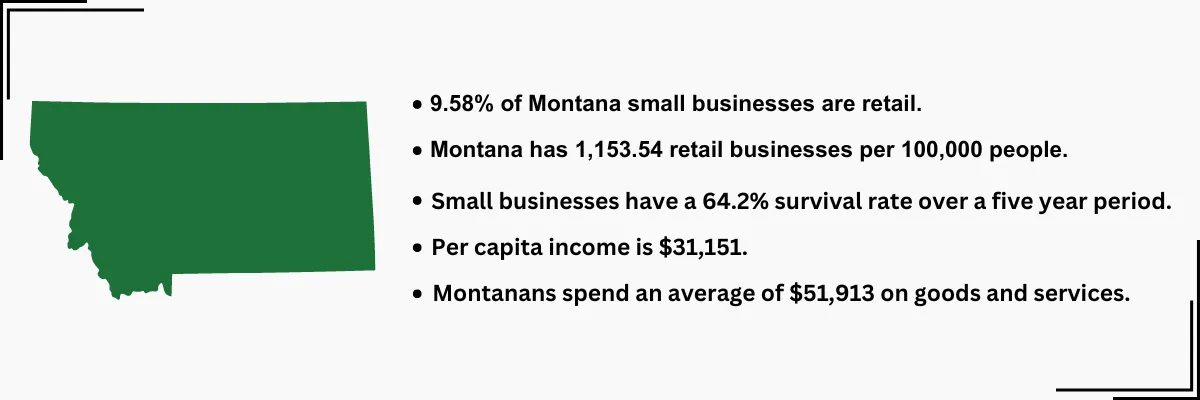
3. South Dakota
South Dakota comes in third for the best states for independent retailers. However, it ranks first for the percentage of retail businesses: 12.10% of all small businesses are retail establishments. It also comes in second place for the number of retail businesses per capita, having 1,223.46 retail businesses per 100,000 people.
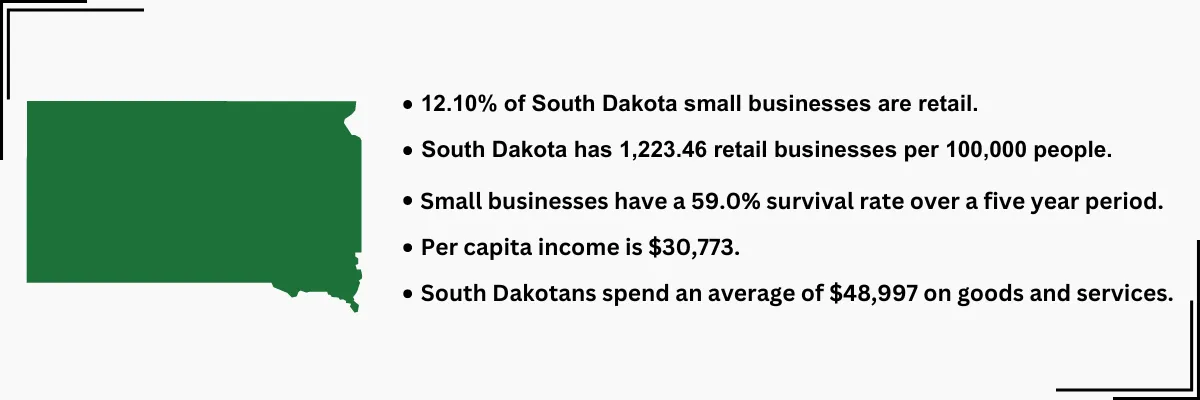
4. North Dakota
North Dakota ranks fourth overall but comes in third for percentage of retail businesses, with 11.18% of all small businesses being retail trade. Additionally, it has 1,059.44 retail businesses per 100,000 people and a 56.7% business survival rate.
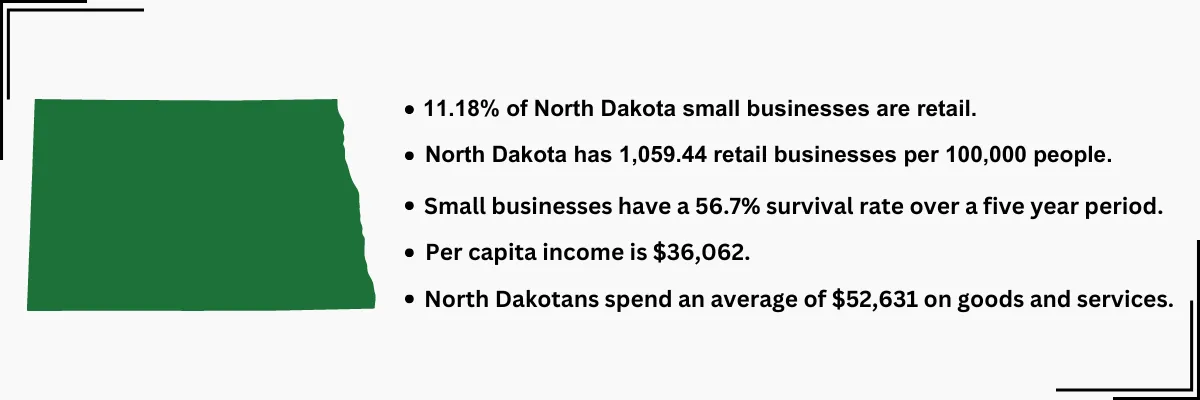
5. Illinois
Our fifth-place winner is Illinois. This state shines with its 60.0% business survival rate and 86.9% urban population, easily connecting retailers with consumers. Additionally, households in Illinois have higher personal consumption expenditures (PCE) than the national average, spending about $54,341 on goods and services.
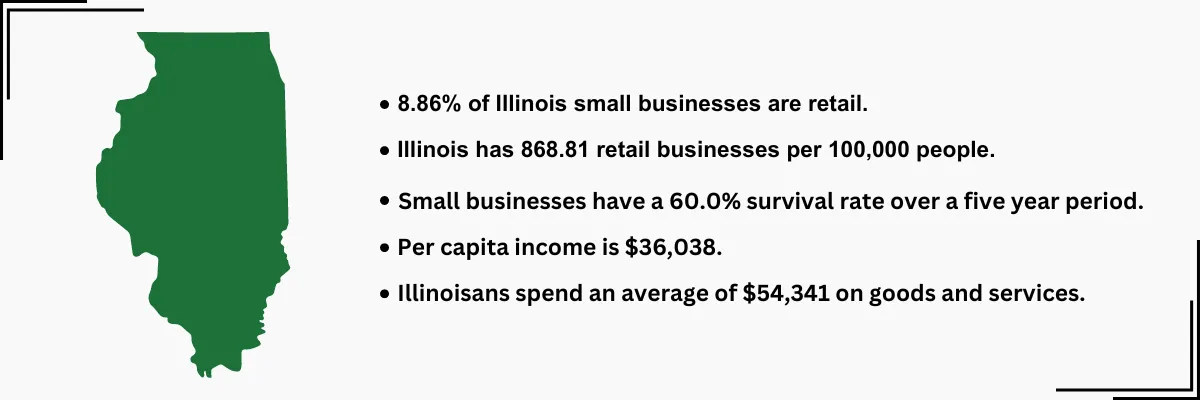
6. Massachusetts
Massachusetts ranks sixth overall but comes in first for PCE, with people spending $64,214 on goods and services. It also comes in second for highest per capita income at $43,761. Finally, Massachusetts sports a 61.7% business survival rate.
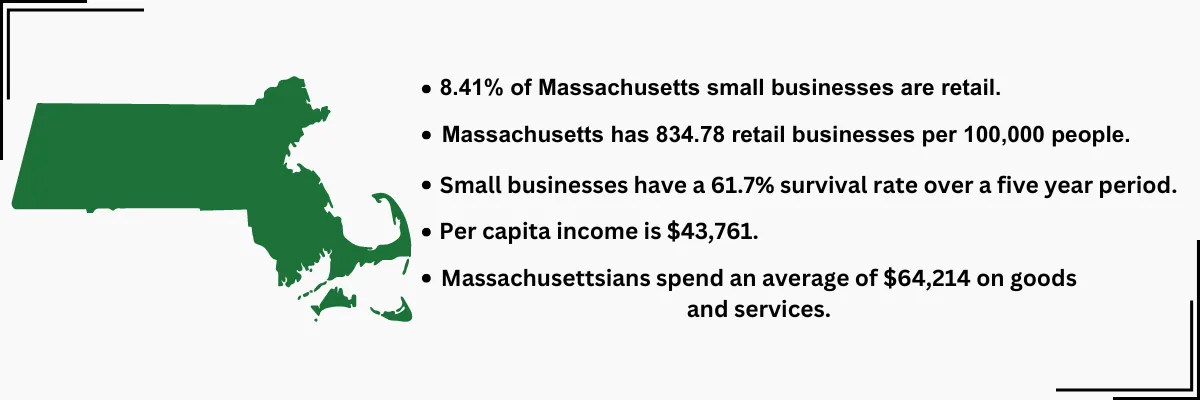
7. Connecticut
Connecticut is the seventh-best state for independent retailers. It comes in third for business survival rate at 63.1% and has the highest per capita income of all states at $44,496. Finally, 86.3% of Connecticut’s population is urban, making it a great place for independent retailers.
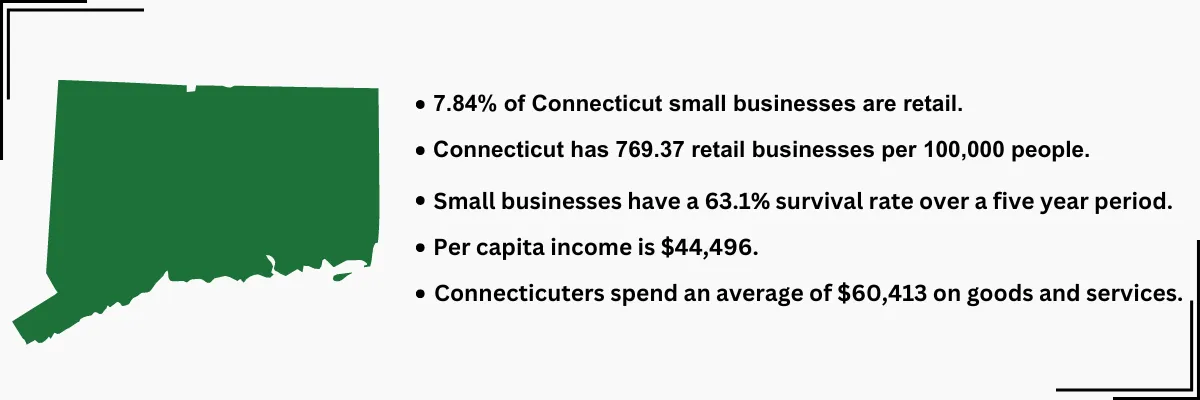
8. Pennsylvania
Pennsylvania ranks eighth overall but comes in seventh for business survival rates at 60.8%. Independent retailers will be happy to learn that Pennsylvania has a 76.5% urban population, making it easier to connect with consumers. It also ranks higher than the national average for the percentage of retail businesses, with 9.77% of all small businesses being retailers.
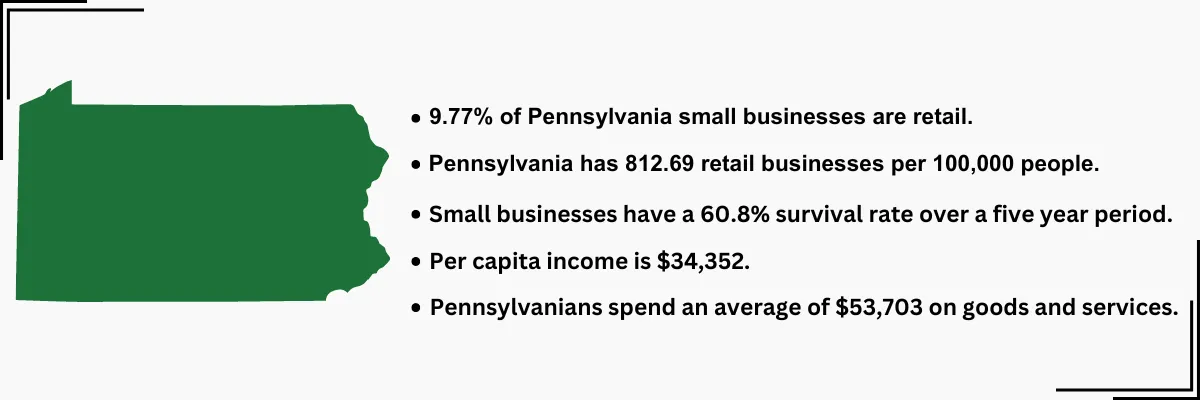
9. Hawaii
Despite having the highest cost of living index, Hawaii ranks far above the national average for per capita income and PCE. Additionally, 10.22% of all businesses are retail trade, with 940.86 retail businesses per 100,000 people. Hawaii also has a 57.6% business survival rate, making it a great place for independent retailers.
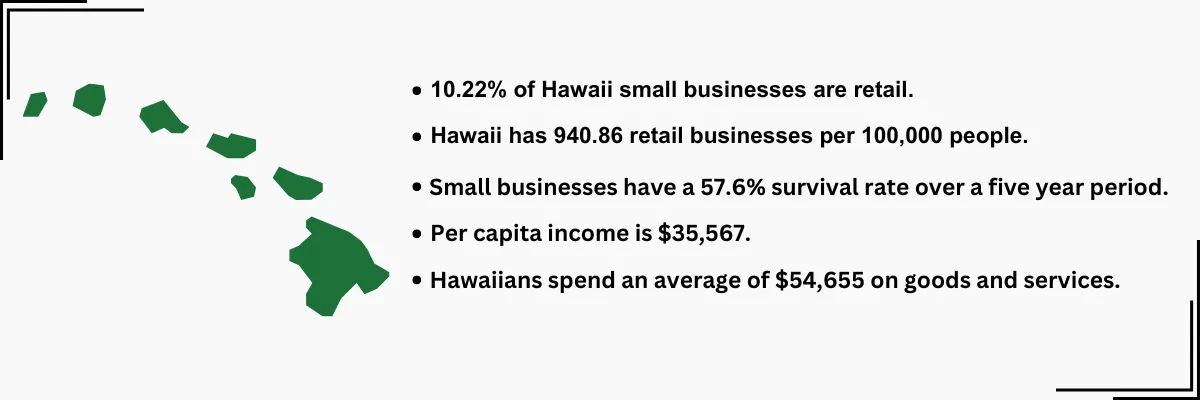
10. Iowa
Iowa ranks tenth overall and comes in fifth place for the percentage of retail businesses at 10.98%. The cost of living index is 89.7, coming in 6th place, and it has a 63.2% urban population, making it a great place for independent retailers.
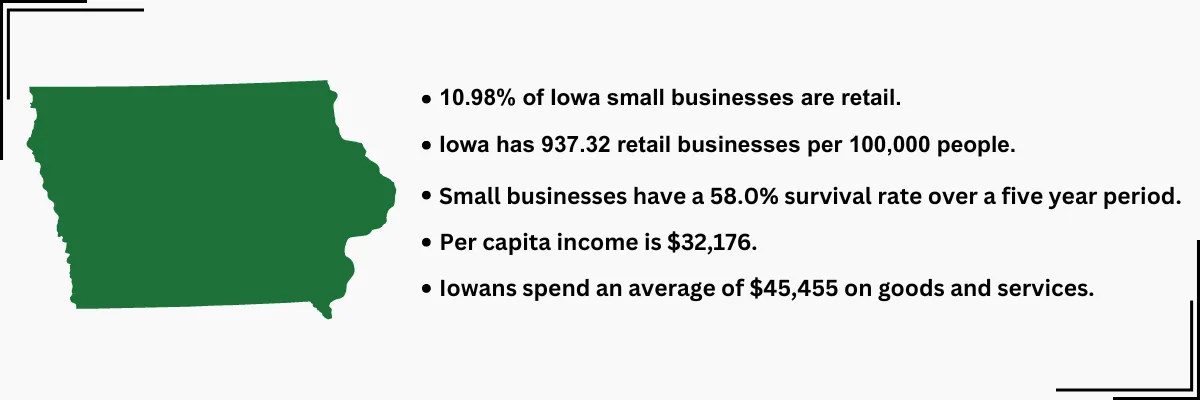
Methodology
The B2B Reviews research team compared business survival rates, retail business presence, per capita income, cost of living, and personal consumption expenditures for all 50 states and the District of Columbia to determine where established independent retailers are thriving.
States were ranked within each metric below, earning a score based on the weighted value. They were then graded on a 100-point scale, with 100 points representing the states where independent retailers thrive most.
Density of Retail Businesses - Total 27 Points
This category covers two metrics. The first metric looks at the percentage of retail businesses compared to total small businesses by state. The second metric considers the number of retail businesses per 100,000 people in each state.
- Percentage of Retail Businesses (16 points)
- States with a higher percentage of retail businesses scored better.
- Number of retail businesses per 100,000 people (12 points)
- States with more retail businesses per 100,000 people scored higher as it indicates demand and growth for retail businesses.
Business Survival Rates - Total 28 Points
This category examines the survival rate of small businesses over a five-year period. States with a higher survival rate received a better score.
Per Capita Income - Total 17 Points
This category looked at state income per capita. Data was collected from the latest information from the United States Census Bureau. States with a higher per capita income scored better, as income affects consumers' spending power and, therefore, impacts independent retailers.
Cost of Living - Total 10 Points
This category looks at the cost of living for each state. Data was gathered from the World Population Review and normalized on a 100-point scale. States with a lower cost of living scored higher.
Personal Consumption Expenditures - Total 18 Points
Personal consumption expenditures (PCE) measure consumer spending on goods and services among U.S. households. Based on data from the Bureau of Economic Analysis, we gathered the PCE for all 50 states and the District of Columbia. States with a higher PCE scored better.
The Bottom Line
Independent retailers are vital for local economies and job creation. Not only does every purchase made at an independent shop stay in the area longer, boosting the local economy, but it also helps to distribute wealth.
Some states are better equipped to help their independent retailers thrive and grow. With a greater concentration of retailers, higher per capita income, lower cost of living, and a higher than average PCE, Minnesota lands at the top of our list.
July is Independent Retailer Month, and B2B Reviews sought to find which states are best for independent retailers to help raise awareness. If your state did not make it in the top ten, or even if it did, take some time to visit and support your local, independent shops. Not only will it be fun, but you’ll be helping your city, town, or community thrive.
Fair Use Statement
Feel free share our findings for noncommercial purposes so others can see how their state ranked in this new report. We ask that you provide a link back to this page so readers can access our full research and findings.
Related Articles
- Best States for Black-Owned Businesses in 2025
- Best States for Hispanic-Owned Small Businesses
- Best States for Native American-Owned Small Businesses
Data used to create our rankings were collected from the following sources:
- Bureau of Economic Analysis. “Personal Consumption Expenditures by State, 2022.” Accessed July 5, 2024.
- United States Census Bureau. “Selected Economic Characteristics.” Accessed July 5, 2024.
- U.S. Bureau of Labor Statistics. “Business Employment Dynamics.” Accessed July 5, 2024.
- U.S. Small Business Administration: Office of Advocacy. “2023 Small Business Profiles for the States, Territories, and Nation.” Accessed July 5, 2024.
- World Population Review. “Cost of Living Index by State 2024.” Accessed July 5, 2024.
